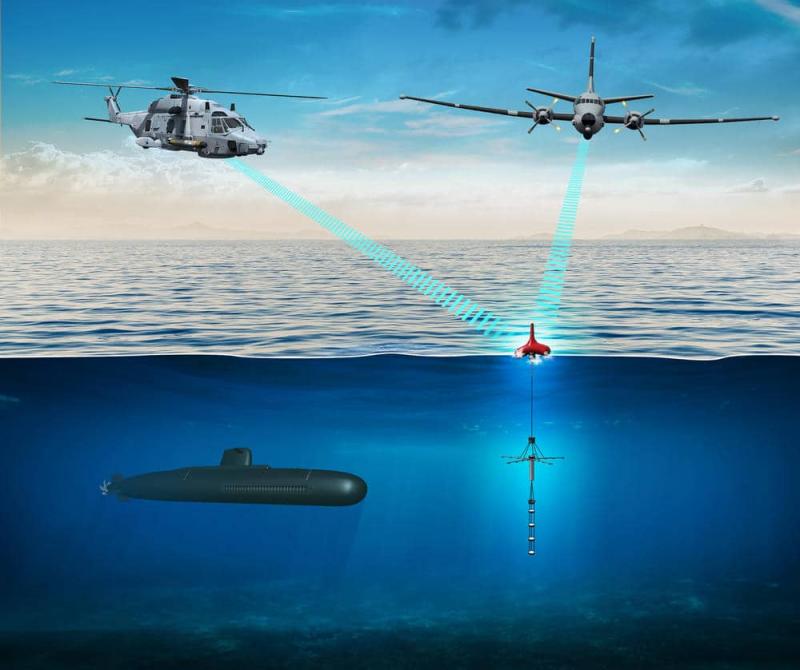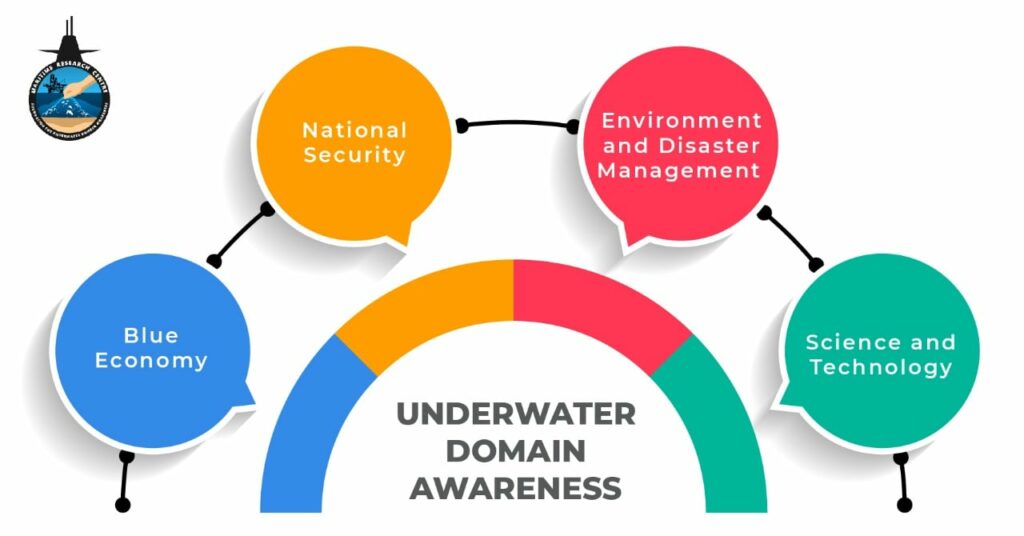
- Underwater Domain Awareness (UDA) emerged as a priority area since it deals with technologies and strategies to monitor and protect undersea environments from possible threats.
- The announcement of an agreement to co-produce US-designed sonobuoys between Indian and American defence companies is a major achievement for this partnership.
- The benefits of this partnership are substantial; as India enhances its UDA capabilities, it positions itself as a regional leader, ready to contribute to collective security efforts in the Indo-Pacific.
The emergence of defence relations between India and the United States, especially stepping into the waters of Underwater Domain Awareness (UDA), is a watershed moment. This partnership is not merely a reaction to recent geopolitical tensions; its historical significance mirrors the evolving strategic aspirations of both nations. The talks marked the culmination of several initiatives and questioned the growing priority in the context of maritime security in the Indian Ocean Region (IOR). The establishment of a partnership may essentially be assessed from the history of their cautious beginnings to their nascent strategic partnership. The post-Cold War era forced both nations to understand the necessity of fighting for “continued survival”, especially against growing regional threats. The U.S. has increasingly come to view India as an essential Partner for stability within the Indo-Pacific, particularly in the backdrop of a rising China with its assertive maritime posture.
Against this backdrop, UDA emerged as a priority area since it deals with technologies and strategies to monitor and protect undersea environments from possible threats. The announcement of an agreement to co-produce US-designed sonobuoys between Indian and American defence companies is a major achievement for this partnership. Sonobuoys are considered an integral device for modern anti-submarine warfare, as they can detect and track underwater threats from underwater basis on acoustic data collection. It further will enhance India’s UDA capability which seeks to optimize its maritime security architecture instrumental in protecting its footprint across the waters of the Indian Ocean. Consequently, initiatives such as the establishment of the Information Fusion Centre – Indian Ocean Region (IFC-IOR) demonstrate India’s commitment to fostering collaborative security efforts with partner nations.
The recent meeting between Prime Minister Narendra Modi and U.S. President Donald Trump has further strengthened their commitment to defence collaboration. During this meeting, they announced the creation of the Autonomous Systems Industry Alliance (ASIA). This alliance is designed to boost partnerships within the industry and improve production capabilities for autonomous systems related to UDA. This initiative marks a significant shift towards incorporating advanced technologies into India’s defence framework, which will enhance cooperation with U.S. forces and other allied nations. The partnership goes beyond just submarines; it also includes cutting-edge technologies like autonomous underwater vehicles (UUVs) and unmanned surface vehicles (USVs). These technologies play a vital role in carrying out surveillance missions in contested waters, especially as naval activities in the Indian Ocean Region (IOR) increase due to geopolitical tensions.

A prime example of this collaboration is the partnership between Bharat Dynamics Limited (BDL) and the U.S.-based Ultra Maritime. This collaboration highlights the potential for co-development and co-production, which can significantly boost India’s operational capabilities. The benefits of this partnership are substantial; as India enhances its UDA capabilities, it positions itself as a regional leader, ready to contribute to collective security efforts in the Indo-Pacific. This transformation not only strengthens India’s defence posture but also aligns with U.S. interests in countering China’s expanding influence in maritime areas. The interoperability of systems developed through this partnership will enable joint operations between the Indian Navy and the U.S. Navy, promoting deeper military cooperation.
In addition to the exciting technological advancements, the partnership between India and the United States highlights a deeper strategic alignment. Both countries are committed to boosting maritime security, recognizing that they face similar challenges in a world that is becoming more complicated. As new threats arise, it’s crucial for their strategies to adapt; this collaboration is a proactive step towards maintaining peace and stability in the region. India’s involvement in initiatives like ASIA shows its readiness to work with global partners on important defence matters while also striving for self-sufficiency through its “Make in India” program. This initiative focuses on enhancing local manufacturing and self-reliance by reserving certain items for domestic suppliers and forming joint ventures with foreign nations. For instance, agreements with Russia for naval frigates and helicopters are key components of this strategy. By combining homegrown capabilities with foreign technology transfers, India aims to establish a strong defence industrial base that supports its long-term goals.
In summary, the recent progress in U.S.-India defence cooperation, particularly in underwater domain awareness, marks a crucial turning point in their relationship. Through joint efforts in advanced technologies and shared strategic goals, both nations are set to significantly improve their maritime security frameworks. As they navigate the increasingly complex geopolitical landscape, this partnership not only enhances their defence capabilities but also plays a vital role in ensuring regional stability and security in the Indo-Pacific. The ongoing story of this collaboration is sure to influence future interactions between India and the United States as they join forces to tackle emerging challenges on the global stage. Together, they are addressing coercive threats, particularly from China’s expanding naval presence in the Indian Ocean and the South China Sea, recognizing that these challenges require a united approach.
References:
- Jacob, Jayanth. 2025. “F-35 Jets to Undersea Systems: Key Details of India-US Defense Pact Unveiled after Modi-Trump Meet.” The New Indian Express. February 14, 2025. https://www.newindianexpress.com/nation/2025/Feb/14/f-35-jets-to-undersea-systems-key-details-of-india-us-defense-pact-unveiled-after-modi-trump-meet.
- “India and U.S. Forge Ahead with Sonobuoy Co-Production for Enhanced Undersea Domain Awareness – Indian Defence Research Wing.” 2025. Idrw.org. 2025. https://idrw.org/india-and-u-s-forge-ahead-with-sonobuoy-co-production-for-enhanced-undersea-domain-awareness/#google_vignette.
- Das, Arnab. 2023. “US-India Defence Trade and India’s Underwater Domain Awareness.” Orfonline.org. OBSERVER RESEARCH FOUNDATION (ORF). December 4, 2023. https://www.orfonline.org/expert-speak/us-india-defence-trade-and-indias-underwater-domain-awareness-61571.
- ICWA. 2024. “Underwater Domain Awareness: Challenges and Opportunities for India – Indian Council of World Affairs (Government of India).” Icwa.in. 2024. https://www.icwa.in/show_content.php?lang=1&level=3&ls_id=10959&lid=6965.
- “U.S. And Indian Governments Support Industry Defense Partnership for Undersea Domain Awareness | Liquid Robotics.” 2016. Liquid Robotics. Liquid-Robotics Liquid-Robotics liquid-robotics. 2016. https://www.liquid-robotics.com/press-releases/u-s-and-indian-governments-support-industry-defense-partnership-for-undersea-domain-awareness/.
- “Financial Express.” 2025. Financialexpress.com. Financial Express. January 7, 2025. https://www.financialexpress.com/business/defence-groundbreaking-india-us-partnership-enhances-undersea-domain-awareness-for-indian-navy-3708977/.
Shrivara Mahajan is pursuing an International Relations major with a minor in Public Policy at OP Jindal Global University. He is a Senior Intern at the Jindal Centre for the Global South and has priorly interned with The Spread Smile Foundation. Views expressed are the author’s own.
